
The GearIT Cat6 outdoor ethernet cable spans 100ft and is specially designed to provide a reliable and high-speed connection for outdoor networking needs. In this post, we’ll evaluate its performance, durability, and overall value, to help you decide if this is the right Ethernet cable for your specific requirements.
With the ability to withstand extreme conditions, increase speed, and ensure a stable and interference-free internet connection, this rugged cable is ideal for connecting all your devices in both business and home networks. Read on as we unravel the features and benefits of this impressive piece of technology.
GearIT Cat6 Outdoor Ethernet Cable
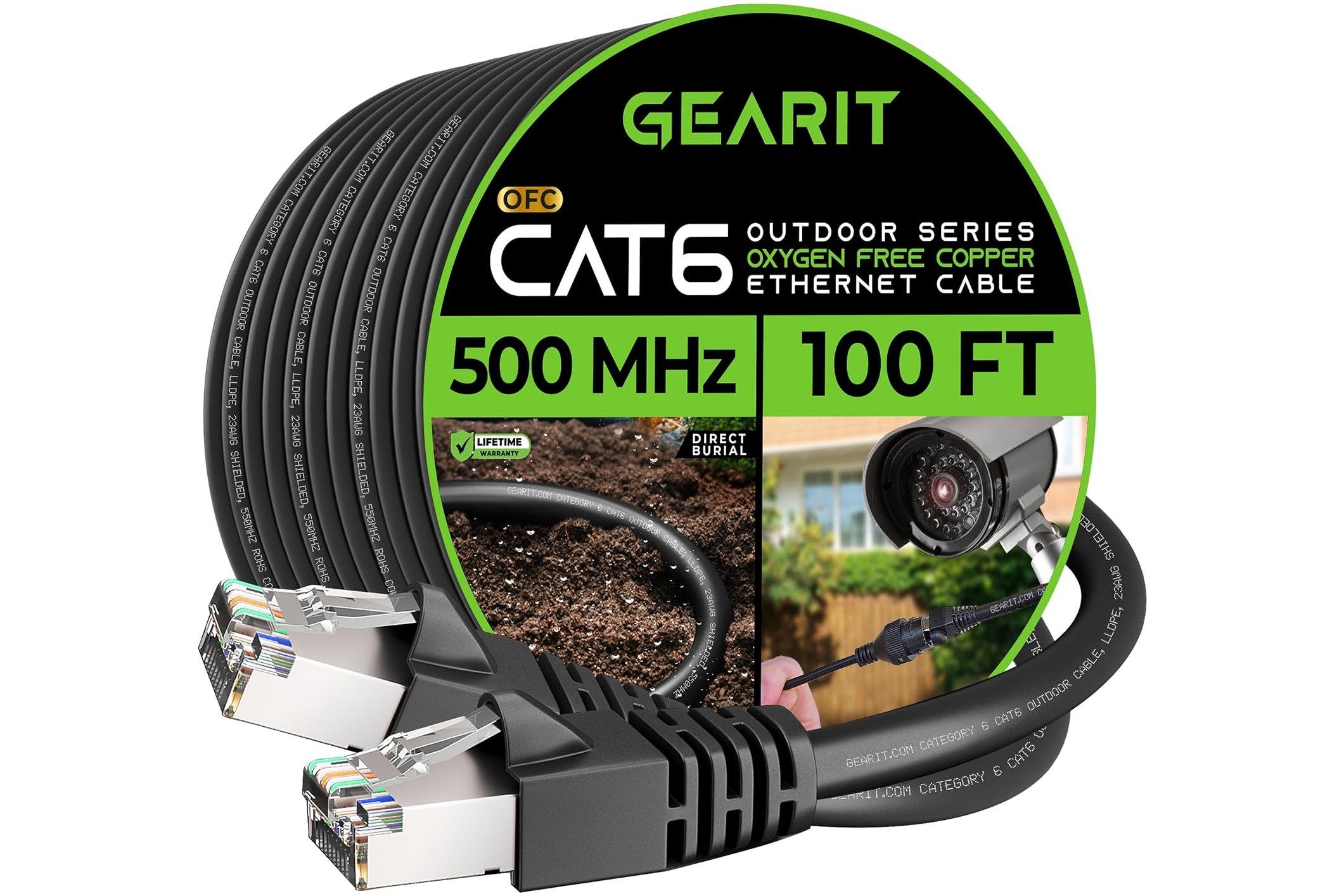
Experience the future of wired connectivity with the GearIT outdoor Cat6 patch cables. Encased in a rugged PVC jacket, these cables are designed for resilience, making them ideal for direct burial in the ground amidst varying temperature conditions and exposure to dust or dirt.
Crafted with purity in mind, these cables are made from high-quality pure copper and multiple insulating layers that not only enhance signal quality but also speed. Enclosed are four color-coded twisted pairs under the 568B standard, ensuring compatibility with Internet devices and LAN networks.
With the potential to conduct up to 10 Gbps and 550 MHz, the Cat 6 Ethernet cables effectively increase speed and reduce signal interference. The cables are fitted with high-speed RJ45 connectors that match the cable’s caliber, ensuring a stable, interference-free Internet connection.
Combine these superior features with broad device compatibility, and you have a cable that is perfect for connecting network devices, computers, game consoles, and more in your business or home network. So, why wait? Upgrade your connectivity with GearIT outdoor Cat6 patch cables for a smoother, faster, and more stable networking experience.
Pros
- Suitable for POE devices
- Durable with robust insulation
- High signal performance
Cons
- Cable material is rough to work with
From the manufacturer
- Rugged PVC jacket for outdoor use
- Pure copper shielded Cat6 cable
- Insulating layers improve signal quality
- Conducts up to 10 Gbps at 550 MHz
- RJ45 connector for stable connection
- Compatible with 568B standard devices
- Suitable for all network devices
Costumer review
“I ran this cable underground through 25′ of non metallic conduit to extend wifi from my home to my workshop. The connectors on each end were quality made with protective boots, and the cable itself should have been fine even if left unprotected outdoors. A good value.” – Nick W.
Other products from the brand
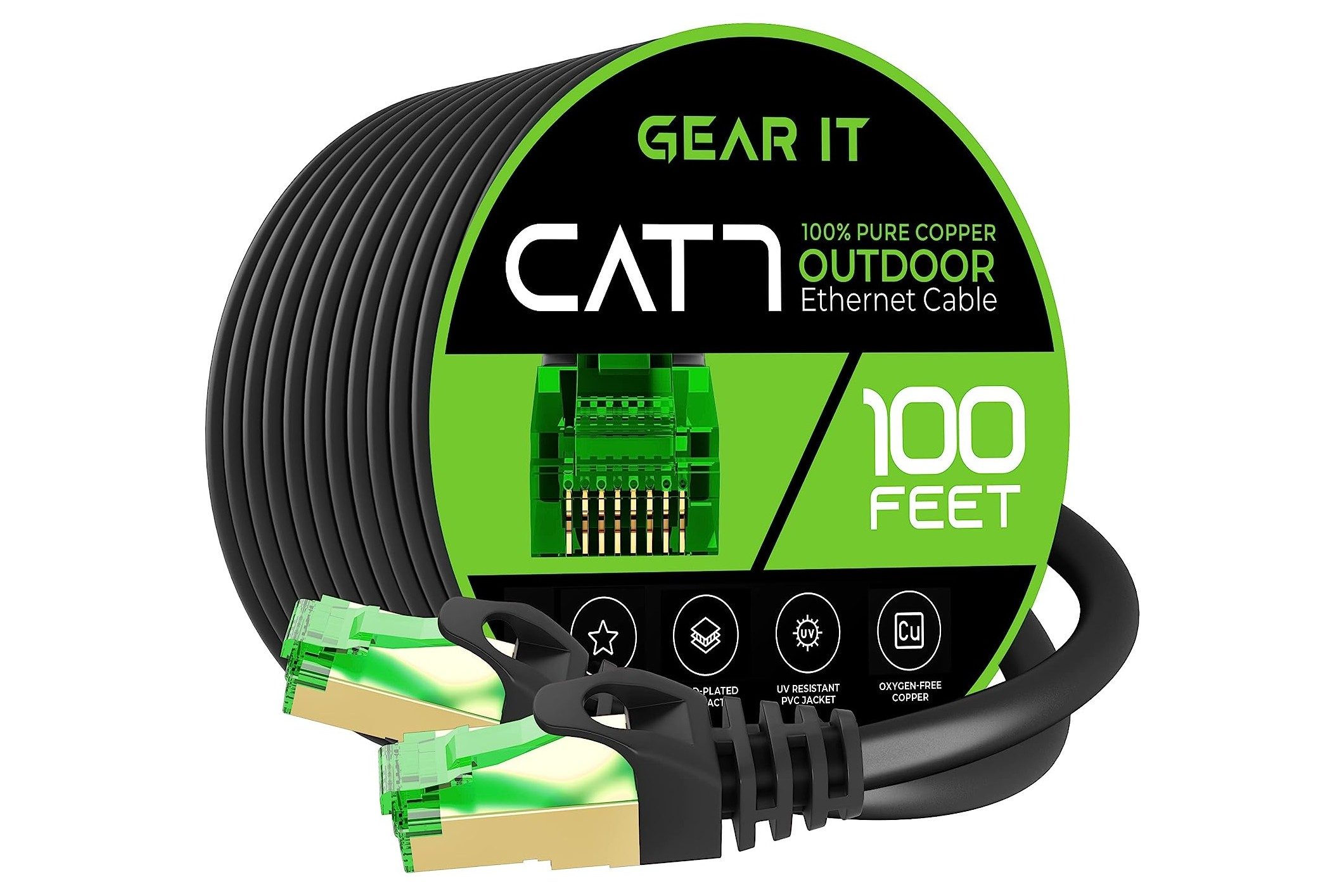
GearIT Cat7 Outdoor Ethernet Cable (100ft)
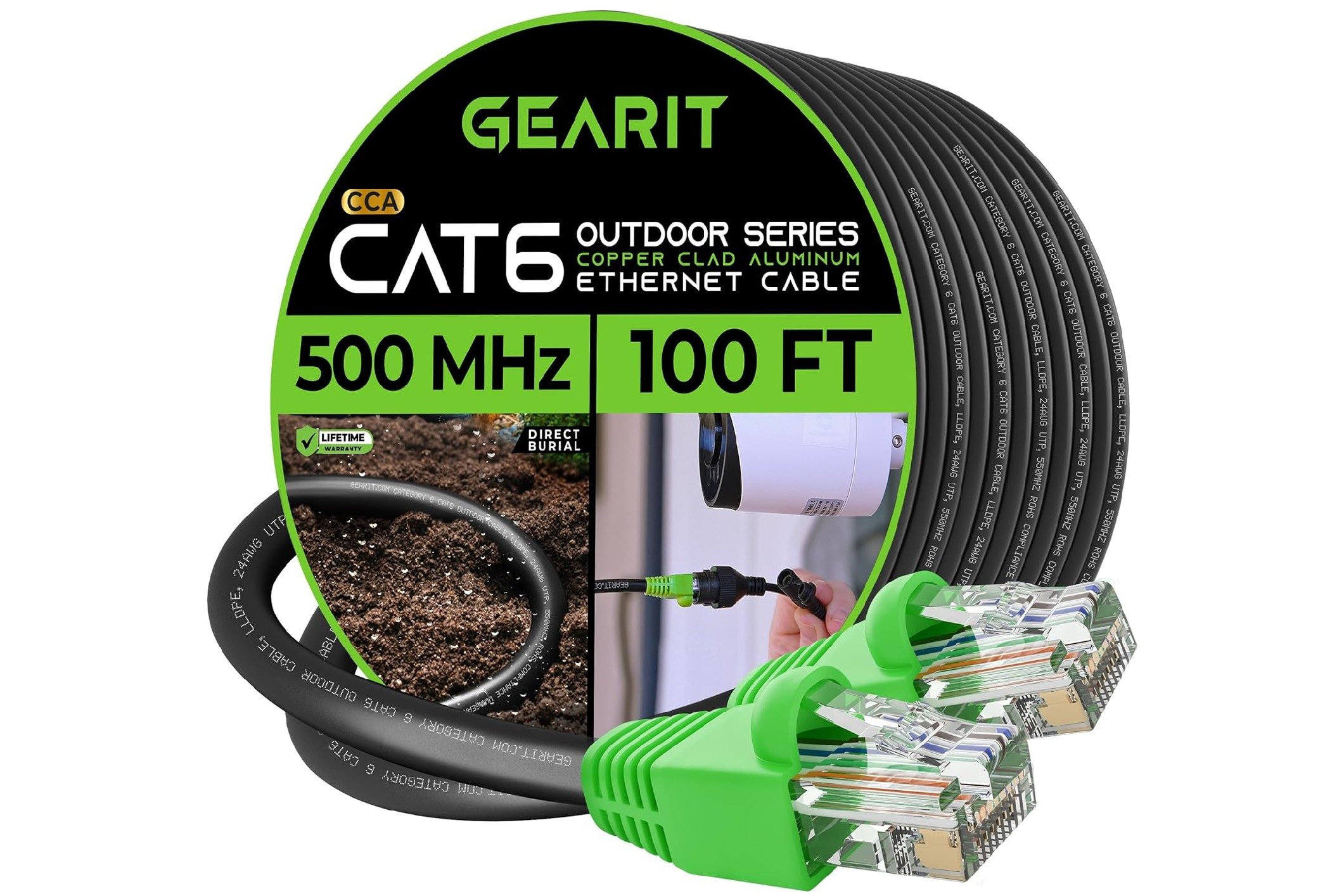
GearIT Cat6 Outdoor Ethernet Cable (100 Feet)
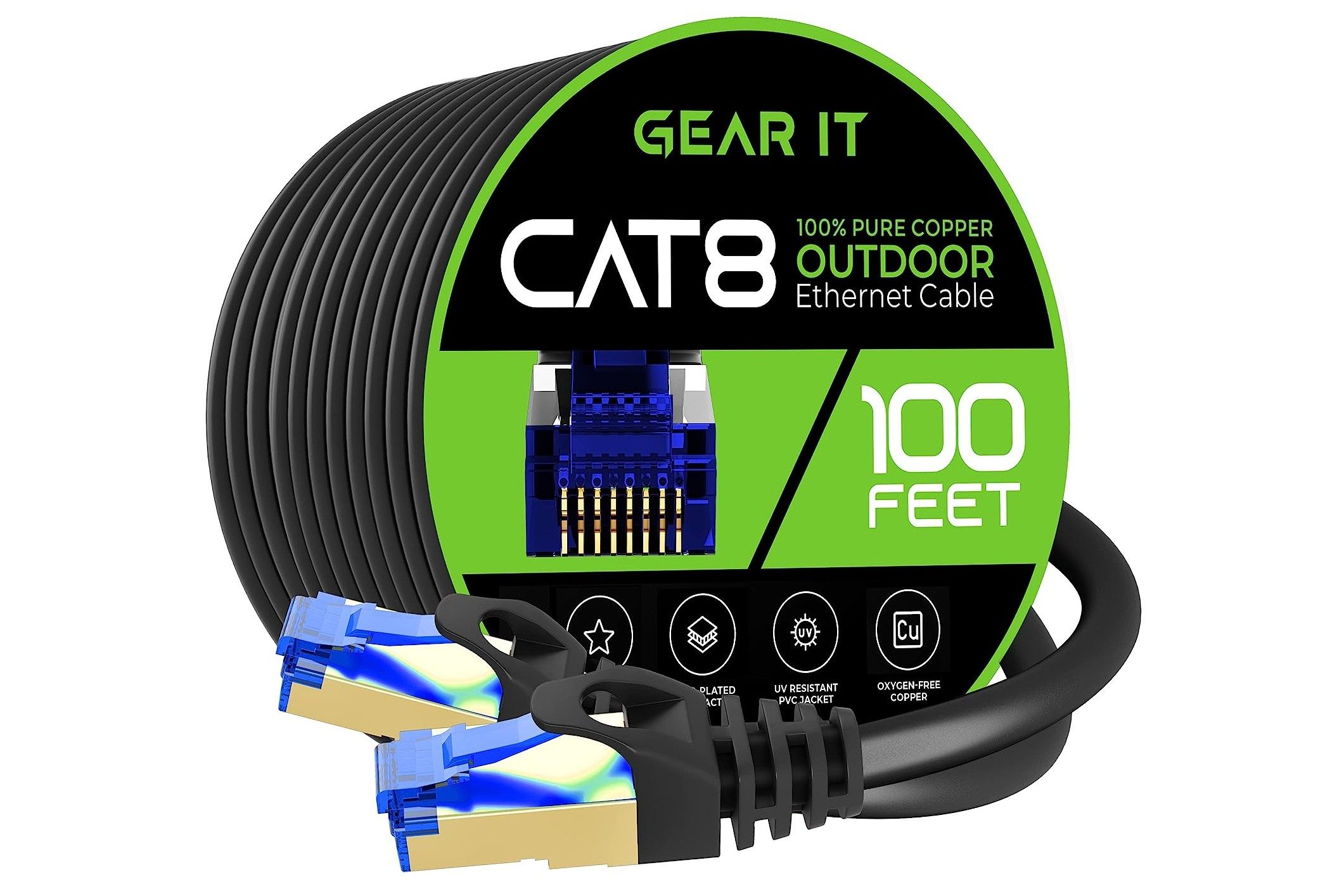
GearIT Cat8 Outdoor Ethernet Cable (100 Feet)
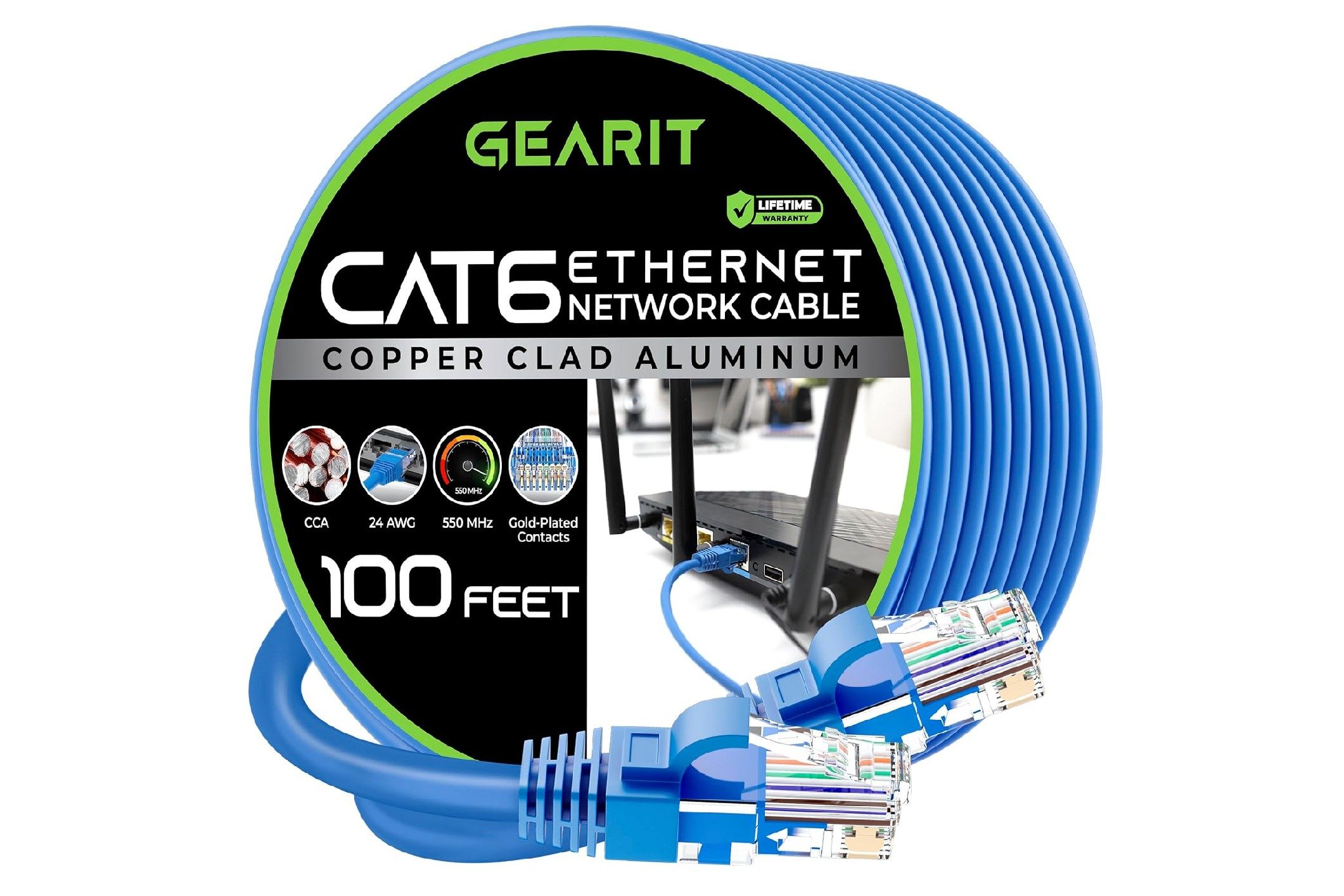
GearIT Cat 6 Ethernet Cable (100 feet)

Outdoor ethernet cables: the ultimate buyer’s guide
Ethernet cables are the backbone of a solid and reliable internet connection. As our dependence on the internet grows by the day, having the right cable has become paramount. This guide will break down the key product features you should look out for when choosing an outdoor Ethernet cable.
Cable type
There are two main types of outdoor Ethernet cables: Direct Burial and Outdoor-Rated (CMX). Direct burial cables are designed to be buried underground without conduit, while outdoor-rated cables are suitable for above-ground use but may require protection if directly exposed to sunlight or extreme weather.
Cable category
Ethernet cables come in different categories like Cat5e, Cat6, Cat6a, and Cat7. Choose the appropriate category based on your network’s speed requirements. Cat5e is suitable for most residential applications, while Cat6 or higher is recommended for gigabit or faster networks.
Cable length
Measure the distance between your network devices and select cables that provide enough length. It’s advisable to add a bit of extra length for flexibility and future adjustments.
Shielding
Consider whether you need shielded (STP) or unshielded (UTP) cables. Shielded cables offer better protection against interference but are generally thicker and more expensive. Unshielded cables work well in most residential environments.
Connectors
Pay attention to the connectors on the cable ends. Ensure they match the ports on your network devices, typically RJ45 connectors. Some outdoor cables come with pre-terminated connectors for ease of installation.
Weatherproofing
Outdoor Ethernet cables should be designed to withstand various weather conditions. Look for cables with UV-resistant jackets and water-resistant properties. Additionally, some cables come with gel-filled cores for added protection against moisture.
Installation
Consider the ease of installation. Some cables are more flexible and easier to route through tight spaces, while others are stiffer and better suited for direct burial.
Cable color
While aesthetics may not be your top concern, cable color can be important for camouflaging or concealing cables in outdoor environments. Black or gray cables are often less conspicuous.
Budget
Ethernet cables come in a range of prices. While it’s tempting to opt for the cheapest option, investing a bit more in quality cables can lead to better long-term performance and reliability.
Brand reputation
Stick to reputable brands known for producing reliable outdoor Ethernet cables. Reading customer reviews and seeking recommendations can be helpful in choosing the right brand.
In summary, selecting the right outdoor Ethernet cables involves considering cable type, category, length, shielding, connectors, weatherproofing, ease of installation, color, budget, brand reputation, and return policy. Choosing the appropriate cables ensures a stable and reliable network connection in outdoor environments.
People also ask
What is the difference between indoor and outdoor Ethernet cables?
Outdoor Ethernet cables are designed to withstand harsh weather conditions and UV exposure, while indoor cables are not. Outdoor cables also typically have better insulation and protection against moisture.
Can I use indoor Ethernet cables outdoors temporarily?
It’s not recommended. Indoor cables lack the weatherproofing needed for outdoor use and can deteriorate quickly when exposed to moisture and sunlight.
Can I bury outdoor Ethernet cables directly in the ground?
Direct burial Ethernet cables are designed for underground installation without conduit. However, you should consider local building codes and use conduit if required.
How deep should I bury direct burial Ethernet cables?
Bury cables at a depth of at least 18 inches to protect them from accidental damage and to comply with most building codes.
Are outdoor Ethernet cables compatible with Power over Ethernet (PoE)?
Yes, most outdoor Ethernet cables support PoE, but you should check the cable specifications to ensure it can handle the power requirements of your PoE devices.
Can I run outdoor Ethernet cables through conduits or raceways?
Yes, running cables through conduits or raceways provides extra protection and is often recommended for above-ground outdoor installations.
Are all outdoor Ethernet cables UV-resistant?
No, not all outdoor cables are UV-resistant. Check the cable’s specifications to ensure it offers UV protection if it will be exposed to direct sunlight.
How do I protect outdoor Ethernet cable connectors from moisture?
You can use weatherproof Ethernet connectors, silicone sealant, or outdoor-rated junction boxes to protect connectors from moisture.
Do outdoor Ethernet cables support high-speed internet connections?
Yes, outdoor Ethernet cables come in various categories (e.g., Cat5e, Cat6, Cat6a) and can support high-speed internet connections, depending on the category and quality of the cable.
Can I use outdoor Ethernet cables for indoor applications?
Yes, you can use outdoor Ethernet cables indoors. However, they are usually thicker and less flexible, which may be less convenient for indoor setups.


